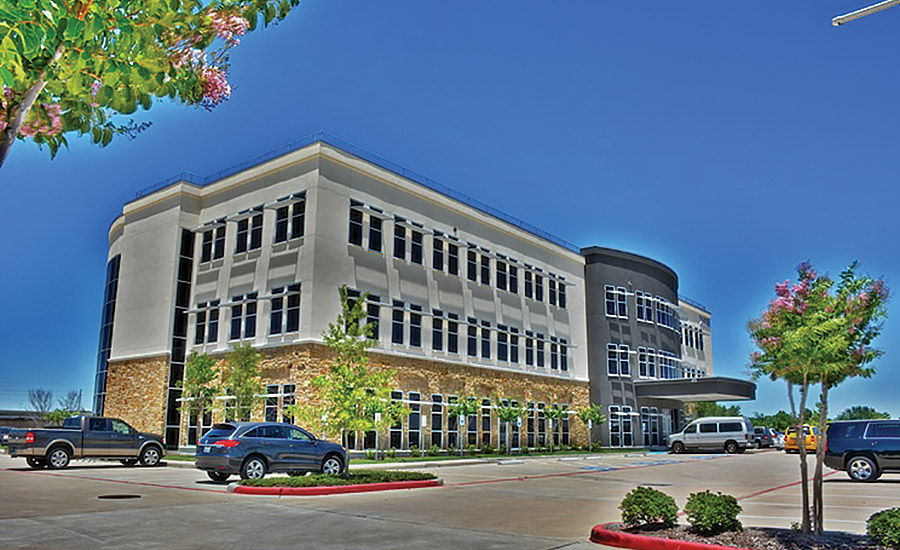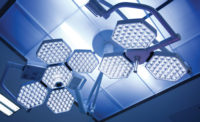As owner and general contractor of the Katy Medical Plaza in the Houston area, Jacob White Construction wanted to develop a next-generation medical office complex constructed with the highest standards.
The goal was to build a facility that would meet Leadership in Energy and Environmental Design (LEED) certification requirements, offer low operating costs, and provide optimal indoor air quality suitable for the standards of medical and health care applications. The plan called for three identical green high-performance buildings to attract the highest level of physician groups and medical and research services.
“I’m a proponent of high-performance buildings, and LEED gives us something to measure it by,” said Jeff Mickler, president of Jacob White. “High performance, meaning really quality air inside and low operating costs, is our main goal for these buildings.”
Jacob White partnered with J & S Mechanical, a design/build mechanical contractor, on the project. Designing the building to be LEED certified was one of the biggest challenges, one that required ventilation effectiveness and overall sustainability of the mechanical systems. They needed mechanical systems that offered reliable, precise performance.
“We need a system that is not going to fail,” said Jay Gabrhel, president of J & S Mechanical.
Based on a long-term relationship with the LEED accredited professionals at Trane, J & S Mechanical selected the company to partner with them on the mechanical design work and equipment for the complex.
Among the equipment chosen for the first of the three buildings was a Trane 140-ton air-cooled RTAC chiller. The RTAC screw chiller includes 60-ton and 80-ton compressors, offering dual-circuit, stand-alone incremental capacity to keep tenants comfortable during peak and off-peak demand periods, while maintaining efficiency. The chiller’s patented unloading system allows the compressor to exactly match building loads to reduce electrical usage in the nearly 50,000-sq-ft facility, while providing enough capacity to offer redundancy.
The RTAC air-cooled rotary chillers are engineered for low life-cycle costs and reliability through design simplicity. With only two moving parts on the system’s Helirotor™ low-speed, direct drive compressors, the chillers meet ASHRAE 90.1 efficiency requirements.
“The incremental capacity on the Trane screw chiller goes a long way toward keeping our energy usage down,” said Gabrhel. “They afford us the ability to provide cooling at off-peak demand at a very reasonable price.”
In addition to energy efficiency systems, choosing systems that could meet the necessary standards for indoor air quality was a priority. IAQ is critical for the productivity and well-being of building occupants, and is especially important due to the nature of the work done by tenants of Katy Medical Plaza.
To meet their stringent IAQ and dehumidification standards, a Trane Performance Climate Changer™ air handler was installed on the roof and configured to provide and treat 100% outside air coming into the building if needed. The system incorporates MERV 13 filtration and requires a minimum of 35% fresh air to keep CO2 levels less than 400 ppm. Supplying air at a constant, low dew point temperature at all load conditions, the unit dehumidifies the outside air to reduce humidity levels to 45% to 50% for comfort and avoidance of mold or bacteria issues.
The roof of the facility, with plant life to generate enough oxygen to support 952 people, plays an important role.
“The technology allows us to monitor for CO2, and if it starts creeping up, the fresh air comes on from the roof,” said Mickler.
In addition to efficient and reliable mechanical systems, the building has other touches that help improve performance and its environmental footprint.
A large water retention system underneath the parking lot that uses retained site drainage provides irrigation for the roof, the 2.7-acre site, and water for the bathroom facilities inside the building.
The facility also uses high-performance glass and has a closed-cell foam insulation on the building envelope, which helps prevent leaks that impact efficiency.
The building achieved the stated objectives and is LEED Gold registered for its environmentally friendly features and high performance.
“With the Trane mechanical system and the tight construction of the building, we are enjoying approximately 40% to 50% savings in energy compared to a similar size building here in the Houston market,” said Gabrhel.
Keeping tenants happy with lower operating costs, high indoor air quality, and reliable temperature and comfort is key for the complex as it expands.
“If we can increase comfort and provide healthy air quality, the tenants are happier and their productivity goes up at least 5%,” said Mickler. “They can definitely see the financial benefits.”



